The Leading Edge: March 2022 Wind Energy Newsletter
In this edition, we celebrate women in wind energy, invite distributed wind energy proposals, announce tool upgrades, and dive deep into the supply chain.
News Stories
NREL Invites Proposals for Distributed Wind Energy
The U.S. Department of Energy's (DOE's) National Renewable Energy Laboratory (NREL) has issued a request for proposals (RFP) for the Competitiveness Improvement Project (CIP)—including a new funding opportunity for manufacturers of small- and medium-sized wind turbines to propose solutions that address cost barriers to rapid technology deployment.
Managed by NREL on behalf of DOE's Wind Energy Technologies Office, CIP awards cost-shared subcontracts and technical support to make distributed wind energy more cost-competitive, improve its interoperability with other distributed energy resources, and increase the number of wind turbine designs that have been verified to national standards. Over its 10-year history, CIP has helped more than two dozen small businesses across the United States develop new and innovative distributed wind energy technology to remain competitive with other renewable-based distributed energy technologies.
Applications for the RFP will be accepted through April 1, 2022. Learn more about CIP and the RFP.
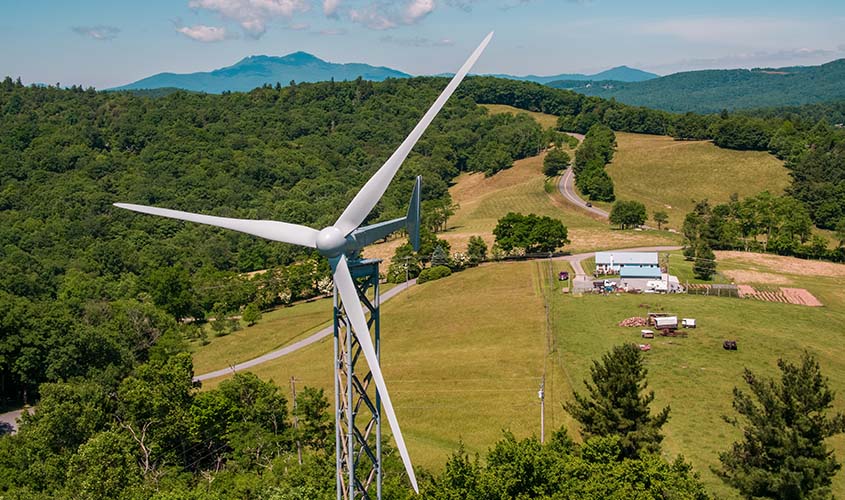
Report Outlines U.S. Offshore Wind Supply Chain Needs, Opportunities
In response to the Biden administration's goal to reach 30 gigawatts (GW) of offshore wind energy by 2030, NREL has published The Demand for a Domestic Offshore Wind Supply Chain. This collaborative study, led by NREL and conducted with the Business Network for Offshore Wind and DNV, provides a broad summary of the components, ports, vessels, and workforce that are likely needed to achieve the 2030 target—and identifies how the offshore wind energy industry will need to expand to meet this demand for resources.
The authors estimate that over 2,100 wind turbines will need to be installed in U.S. waters to meet the administration's energy goal, which would also require 2,100 foundations, 11,000 kilometers of cable (enough to cross the contiguous United States more than twice), five to six wind turbine installation vessels, and 12,300–49,000 annual manufacturing jobs. Investing in key areas, such as marshalling ports and manufacturing critical supporting components, could improve the industry's ability to create these domestic supply chain capabilities.
"The offshore wind pipeline represents a strong demand for manufacturing and workforce capabilities in the United States," said NREL's Matt Shields, the principal investigator of the study who worked with NREL researchers Jeremy Stefek and Frank Oteri. "By understanding the industry's needs, we can better work to strategically address them and move toward our goal of 30 GW of offshore wind by 2030 while also generating significant local economic benefits."
Now, the team will move on to Phase II of the project, which will build on the high-level demand information described in The Demand for a Domestic Offshore Wind Supply Chain report to characterize the potential scope and benefits of a fully domestic supply chain and identify meaningful pathways to develop a new and sustainable industry. The project is overseen by the National Offshore Wind Research and Development Consortium, and additional support is provided by the Maryland Energy Authority and DOE.
Behind the Blades
Together, Women and Wind Energy Can Power Sustainability
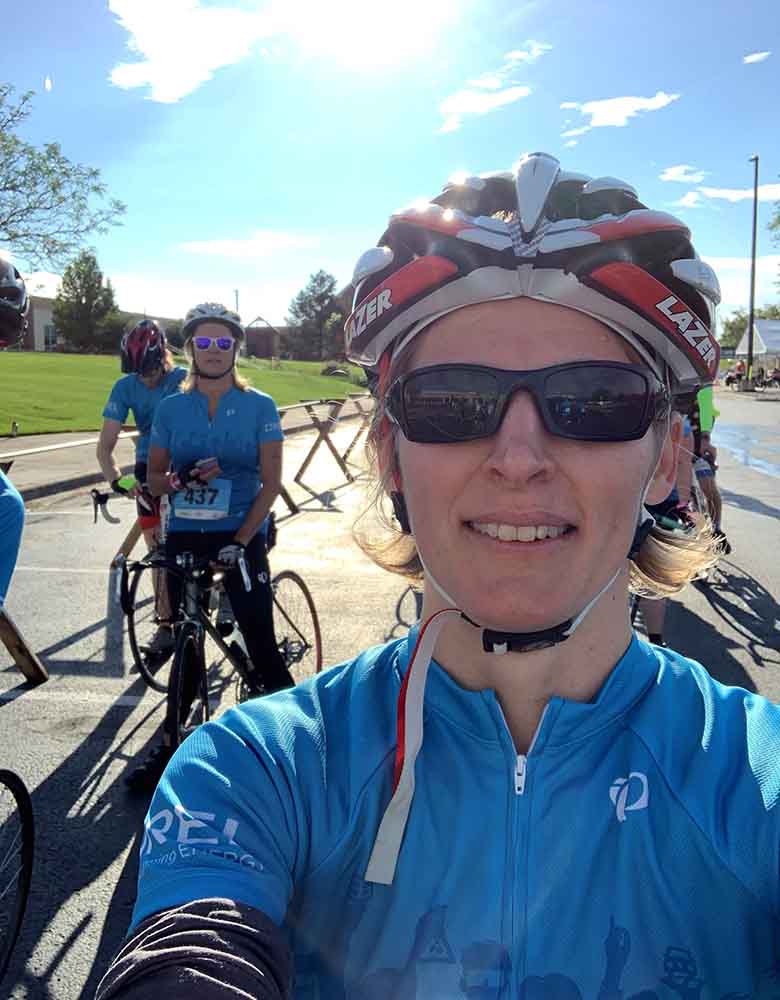
When you think of wind energy, you might picture wind turbines, transmission lines, and power plants. But the renewable energy industry would not be able to turn wind into electricity without the people behind the scenes. And during Women's History Month, it is particularly important to highlight the women in science, technology, engineering, and mathematics advancing the wind energy industry.
For several women working in wind energy research at NREL, their role in helping the United States transition to a clean-energy economy empowers them to keep going.
"Working in renewable energy is a great motivation to get up and go to work every day," says Aubryn Cooperman, who helps decision makers interpret information for more sustainable land-based and offshore wind energy deployment. Knowing that her collaborators, who may focus on different research areas, share a common goal is Aubryn's favorite aspect of being an NRELian.
Mechanical engineer Kelsey Shaler, who dreamt of joining NREL since her undergraduate days and now focuses on analyzing wind turbine longevity as a research engineer, agrees.
"That's the goal—enabling the wind industry to grow as much as possible so that it can supply as much clean energy as possible," she says.
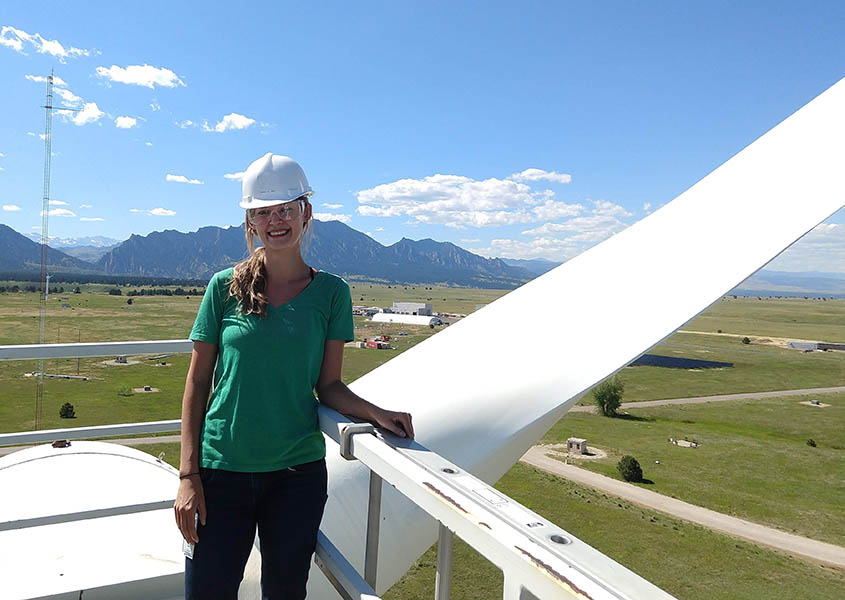

Alicia Key started her academic career in chemistry but then switched to research software engineering. It wasn't until after holding several jobs in that field that she heard about NREL and joined its staff to offer her skills in data visualization and modeling. In only 3 years at NREL, she has contributed to several renewable energy projects.
"The opportunity to create high-quality research software that impacts diverse research areas excites me every day!" Alicia says.
Jen King hadn't heard of NREL until she was offered a summer visiting scholar position during graduate school. Motivated by that, she now works with former idols who routinely left her starstruck in what she calls her "dream job." Her area of work involves optimizing hybrid energy systems that allow different renewable sources, such as wind energy and solar power, to work together.
"That summer, I fell in love with research and especially wind energy research. I got to work side by side with international leaders in the wind energy space," Jen says. "When I think back on how I got here, I feel very lucky to have had so many great mentors in my life, and I strive to provide the same kind of support to grad students and early-career scientists and engineers."
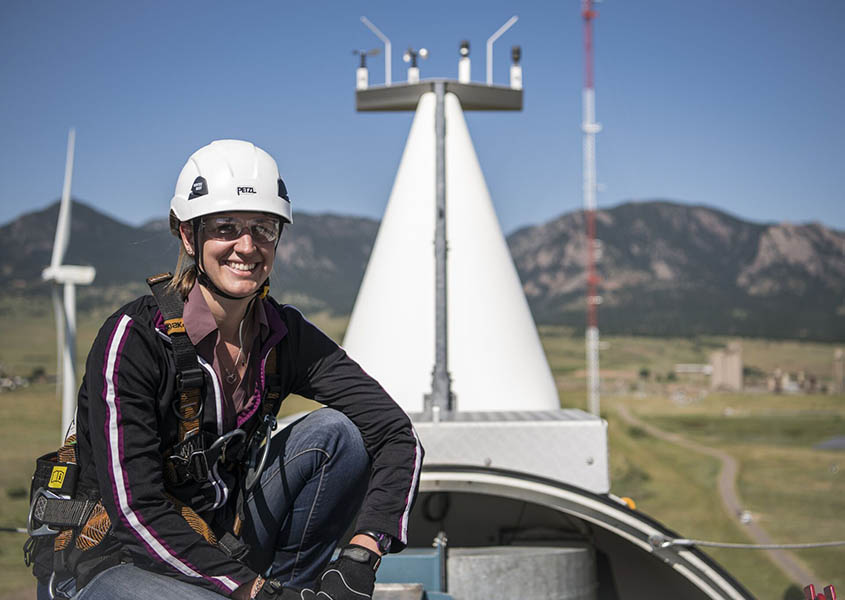
Kelsey, who discovered wind energy through a fifth-grade science presentation, volunteers her time to make kids of all ages—mostly those in middle and high school—aware of opportunities in engineering, renewable energy, and research. She also mentors undergraduate students at NREL through the Science Undergraduate Laboratory Internship program.
"I often tell the kids I mentor, ‘Don't let anyone tell you your needs, wants, and ideas are less than anyone else's or that you need to change in any way to fit in,'" Kelsey says. "Keep going, speak up, and be true to yourself."
All of these women help advance wind energy, but they can't do it alone.
"One of my mentors used to quote an African proverb often, saying, ‘If you want to go fast, go it alone; if you want to go far, do it together,'" says Jen. "And that has really stuck with me."
Like the renewable energy sources in the hybrid power plants Jen studies, women at NREL, in wind energy, and in renewable energy all work together with their colleagues, partners, and collaborators to march toward a clean energy future.
On the Radar
FLORIS Wind Farm Model Announces Version 3.0
NREL has released FLOw Redirection and Induction in Steady State (FLORIS) Version 3.0. The announcement highlights some of the changes in the latest version of the open-source tool. FLORIS enables users to develop site-specific, optimized flow control strategies for wind energy facilities that increase productivity. Learn more about NREL's wind energy tools.
Upcoming Events
March 29, 2022: Join the Eagle Behavior and Risk Modeling for Wind Energy Webinar.
March 29, 2022, and tomorrow, March 30, 2022: Join the Annual U.S. Wind Energy Standards Summit 2022.
June 17, 2022: Save the date for an industry event with the Defense and Disaster Deployable Turbine Project team.
Downwind: In Case You Missed It
NREL Supports Wind Energy Supply Chain Report
In February 2022, DOE published America's Strategy To Secure the Supply Chain for a Robust Clean Energy Transition, a plan to inform the development and realization of a robust energy sector industrial base.
The publication was informed by the Wind Energy Supply Chain Deep Dive Assessment (and affiliated fact sheet), to which NREL wind energy researchers contributed. To assess the U.S. wind industry supply chain and its vulnerabilities, risks, opportunities, and challenges, NREL researchers Eric Lantz, Aubryn Cooperman, and Ruth Baranowski conducted literature reviews and interviews with industry experts. Other NREL researchers who contributed valuable insight to the report include Rich Tusing, Matt Shields, Frank Oteri, Derek Berry, Jeremy Stefek, Paul Veers, and Jonathan Keller.
Along with 12 other deep-dive assessments conducted by DOE and its national laboratories on specific technologies and crosscutting topics, the report identifies strategies and recommendations that could help the United States move toward a secure and equitable clean energy future that will maximize opportunities to strengthen the energy supply chain and develop a world-class American energy manufacturing base and workforce.
NREL Researcher Receives Distinguished Designation
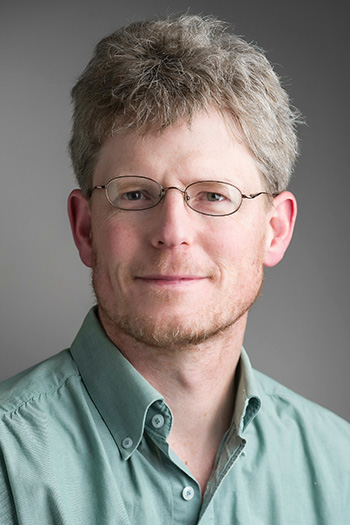
NREL's Distinguished Member of Research Staff designation recognizes research staff for "highly impactful science and technology contributions to the mission of the laboratory."
Among this year's recipients is Ian Baring-Gould—NREL's wind technology deployment manager, technical director of stakeholder engagement activities, and leader of the distributed wind energy research portfolio. He is recognized "for being an international leader in hybrid and remote power systems and wind energy deployment, providing deep and broad expertise and unique value to every project."
In the past, NREL recognized wind energy researchers:
- Matthew Churchfield for "work in computational simulation of the complex flow in wind plants [that] has led global research in this area" and developing a tool that "has been the gold standard for the aerodynamic simulation of entire wind plants"
- Paul Fleming "for recognition as a world leader in wind-plant control"
- Vahan Gevorgian "for contributions in the integration of wind, solar, and energy storage technologies into electric power systems"
- Jennifer King "for pioneering and leading several significant research efforts including consensus wind plant control"
- Patrick Moriarty "for showing exceptional leadership in the science and engineering responsible for the success and growing reputation of NREL as a premiere global wind energy research institution"
- Walter Musial "for being a foundational pillar, contributing to the success of NREL's wind energy and water power research efforts."
NREL in the News
Minimizing Offshore Wind's Impact on Nature Is Tricky, But Not Impossible, Popular Science (2022)
U.S. Plans To Auction 3 GW Offshore Oregon, Pinpoints Three Areas, Offshore Wind Biz (2022)
NREL Aims To Drive Down the Cost of Distributed Wind Energy, Renewable Energy World (2022)
NREL Issues Competitiveness Improvement Project Request for Proposals, Renewable Energy Magazine (2022)
Distributed Wind Energy Innovation: NREL Issues Competitiveness Improvement Project Request For Proposals, CleanTechnica (2022)
NREL Issues Request for Proposals To Accelerate Distributed Wind Deployment in the U.S.A., WindTech International (2022)
Powering the Renewable Energy Transition With 3D Printing: Wind, 3D Printing Industry (2022)
Publications
OC6 Phase Ia Definition Document: Validation of Nonlinear Hydrodynamic Loading on the DeepCwind Semisubmersible, NREL Technical Report (2022)
Load Control for Frequency Response – A Literature Review, NREL Technical Report (2022)
Comparison of the Gaussian Wind Farm Model With Historical Data of Three Offshore Wind Farms, Energies (2022)
Cumulative Effects Analysis for Wind Energy Development: Current Practices, Challenges, and Opportunities, IEA Wind TCP Task 34 IEA Wind White Paper (2022)
A New Shape Optimization Approach for Lightweighting Electric Machines Inspired by Additive Manufacturing, NREL Conference Paper (Preprint)
Want More?
Subscribe to The Leading Edge newsletter, and explore the latest news and accomplishments in wind energy at NREL.
Share

